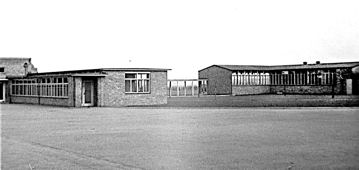Edited by Andrew Roberts
Trumpington’s history in the first half of the 20th century, including the incorporation of the village into Cambridge, the spread of housing and increase in population and the impact of the two world wars. One of a series of pages with Trumpington’s timeline .
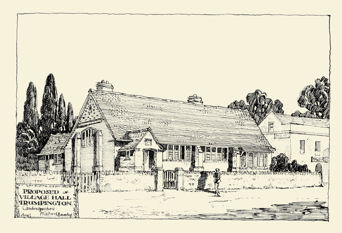
20th century
For background information, see 20th Century Trumpington, published by the Trumpington Local History Group in June 2000. Written by Shirley Brown, with research by Arthur Brookes, Peter Dawson, Ken Fletcher, Michael Hendy, Margaret Marrs, Liz Maloney and Nicholas Wise.
Sources of information: Trumpington Local History Group (2000). 20th Century Trumpington.
Local History Group web page: Group publications.
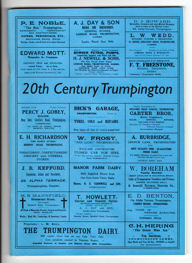
1901
Census carried out on 31 March, population of Trumpington 1084.
Sources of information: The Victoria History of the Counties of England (1948). The History of the County of Cambridge & the Isle of Ely. Volume II, page 138.
Local History Group web page: 1901 Census of Trumpington.
early 1900s
The village begins to extend to the south, with new housing built on the north east side of the road to Great Shelford (later called Shelford Road).
Sources of information:
Local History Group web page:
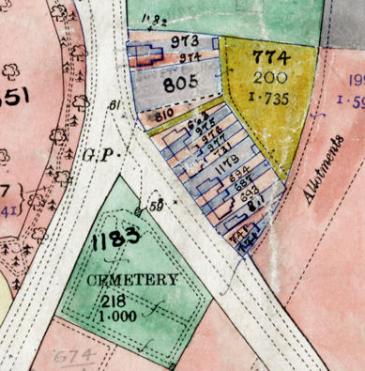
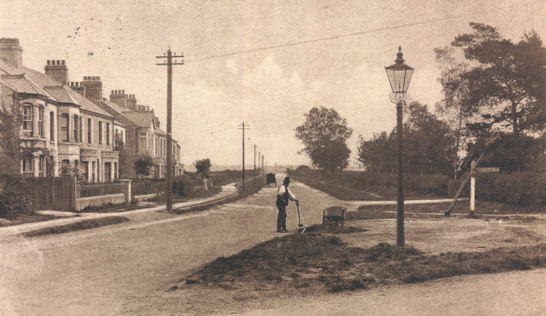
1907-08
In 1907, an appeal was launched for subscriptions to fund a village hall. Trumpington Village Hall (Trumpington Men’s Institute) was designed by York architect Walter Brierley and built in the centre of the village, on the east side of the High Street. The opening meeting in the new hall was held on 22 October 1908.
Sources of information: Village Hall archive. The Victoria History of the Counties of England (1982). A History of Cambridgeshire and the Isle of Ely, Volume VIII. Armingford and Thriplow Hundreds . Trumpington, page 251. Trumpington Local History Group (2000). 20th Century Trumpington. Pages 3-4.
Local History Group web page: History of the Village Hall.
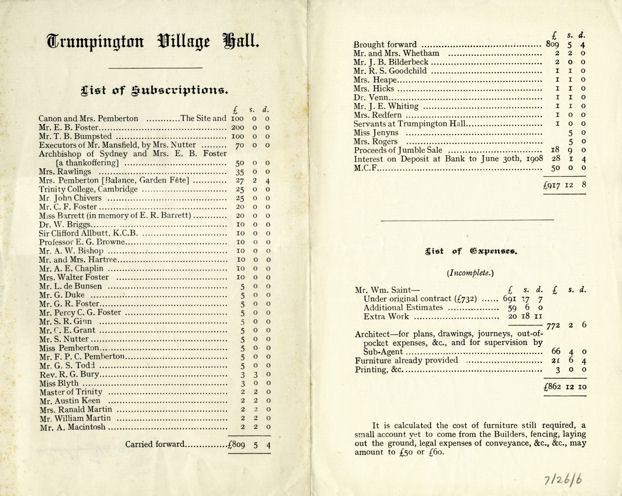
1908
Percy Robinson appointed Master of the Church School.
Sources of information:
Local History Group web page: Education and schools in Trumpington.
1909-11
The government ordered a national Land Valuation survey, the results of which were published in 1910-11, including a map and schedule with details of the occupier, owner and status of each plot of land. The map is the 1901-03 Ordnance Survey 1:2500 map, annotated in 1910, with information for Trumpington assumed to have been collected in 1909-10.
Sources of information: The Commissioners of Inland Revenue (1910). Duties on Land Values. Record of Valuations Made by the Commissioners of Inland Revenue … Valuation Book for the Parishes of Coton, Dry Drayton, Grantchester and Trumpington. (Cambridgeshire Archives, file 470/047.)
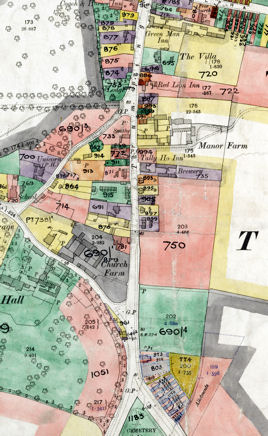
1909
Rupert Brooke moves to The Old Vicarage, Grantchester, and writes the poem “The Old Vicarage, Grantchester” while reminiscing in Berlin, including the lines:
“At Over they fling oaths at one,
And worse than oaths at Trumpington”
Sources of information: Caesar, Adrian (2008). ‘Brooke, Rupert Chawner (1887-1915)’, Oxford Dictionary of National Biography.
Local History Group web page:
1911
Census carried out on 2 April, population of Trumpington 1269 people.
Sources of information: The Victoria History of the Counties of England (1948). The History of the County of Cambridge & the Isle of Ely. Volume II, page 138. The Victoria History of the Counties of England (1982). A History of Cambridgeshire and the Isle of Ely, Volume VIII. Armingford and Thriplow Hundreds. Trumpington, page 251.
Local History Group web page: 1911 Census of Trumpington.
1912
Up to this date, the historic parish of Trumpington had been administratively separate from Cambridge. The first of two major boundary changes was implemented in 1912, with a considerable area of the parish to the north of Long Road being incorporated in Cambridge Borough (497 acres out of an historic area of 2312 acres (527 people), leaving 1815 acres).
Sources of information: Darby, H.C. (1938). A Scientific Survey of the Cambridge Region. London: British Association. Page 178. The Victoria History of the Counties of England (1948). The History of the County of Cambridge & the Isle of Ely. Volume II, page 137. The Victoria History of the Counties of England (1982). A History of Cambridgeshire and the Isle of Ely, Volume VIII. Armingford and Thriplow Hundreds. Trumpington, page 248.
1914-18, World War 1
World War 1 had a profound impact on Trumpington, with over 300 men and women known to have served in the forces, worked in hospitals and similar organisations or volunteered locally. Thirty seven soldiers who died during the War or as a result of their wounds are commemorated on the War Memorial.
Sources of information: Trumpington Community on the Lives of the First World War (IWM); Fletcher, Ken (2014), Trumpington’s Fallen Heroes of World War I; Curme, Phil (2000). World War I and II Role of Honour, Trumpington War Memorial; Trumpington Local History Group (2000). 20th Century Trumpington, pages 8-9.
Local History Group web page: Trumpington and World War I, with links to specific pages.
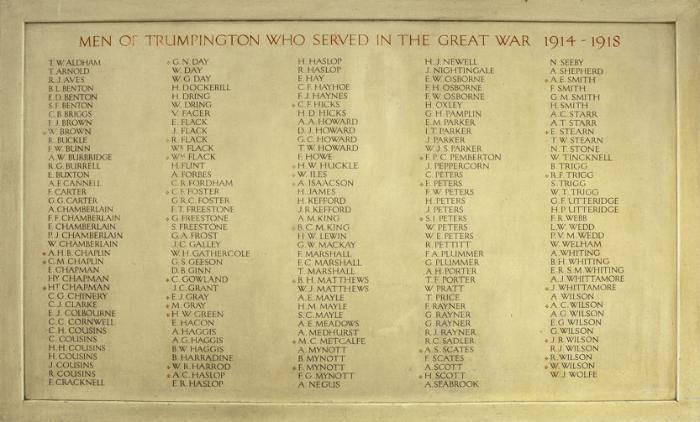
1914
One of the first casualties of the War was Francis P. Campbell Pemberton, killed during fighting in Belgium in October 1914, remembered by a memorial by Eric Gill in the Church.
Sources of information: Lives of the First World War record; Memorial in Church.
Local History Group web pages: Trumpington Church History.
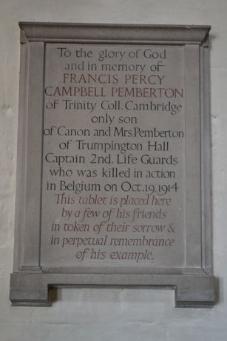
1914
The Trumpington Volunteer Training Corps was established in December 1914, when a meeting was held at the Village Hall. By mid 1915, it involved a cross section of men, including the local vicar, the owner of Anstey Hall, the school master and the head gardener at Anstey Hall. There were regular reports of its work in the local newspapers.
Sources of information: Cambridge Chronicle and Cambridge Independent Press.
Local History Group web page: Trumpington Volunteer Training Corps; 1914-18 Newspaper Reports.
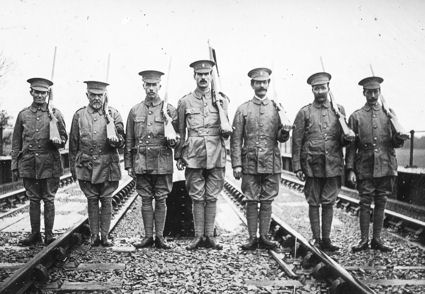
1915
The first of three Rolls of Honour was unveiled in the Church in August 1915, with the names of 69 men who “went over in the Great War of 1914-15 to defend the honour of England and to preserve unscathed for future generations the great inheritance of British justice and British liberty”.
Sources of information: Cambridge Chronicle, 3 September 1915, p. 8. (Cambridgeshire Collection).
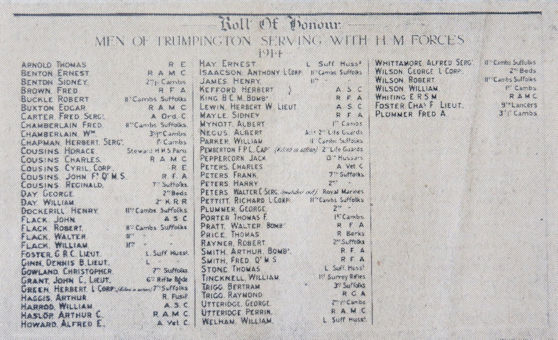
1916
The second local Roll of Honour was unveiled in August-September 1916, with the names of men who joined the forces after 29 August 1915.
Sources of information: Cambridge Chronicle , 6 September 1916, p. 7. (Cambridgeshire Collection).
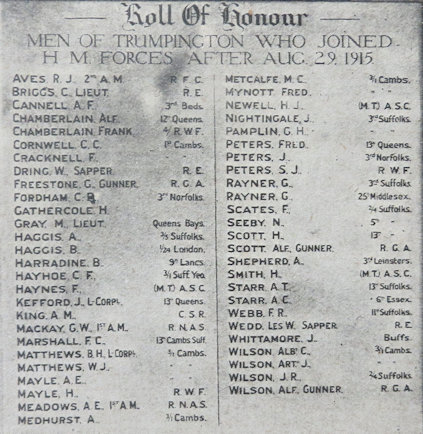
1917
Formation of the 1st Troop of the Trumpington Girl Guides in April 1917. On 4 May 1917, the Ceremony on Enrolment took place at Anstey Hall.
Sources of information: Parish Magazine, June 1917.
1917
Formation of an Allotment Association. The officers appointed were President, G.R.C. Foster; Vice-Presidents, Dr R.G. Bury, J. Collin, G.S. Todd; Committee, W. Duke, E.L. Peters, C. Forbes, R. Smith, J. Pamplin; Secretary and Treasurer, H.E. Foster. The President promised to present a Potato Spraying Machine to the Association and Mrs Collin £1 towards the cost of barrels. Work of spraying was to commence imminently.
Sources of information: Parish Magazine, July 1917.
1918
The third Roll of Honour was unveiled in March 1918, with the names of men who joined the forces after September 1916.
Sources of information: Cambridge Chronicle, 18 March 1918, p. 7. (Cambridgeshire Collection).
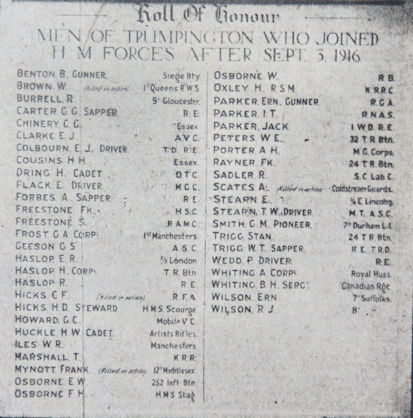
1918
Fisher Act of 1918 made secondary education compulsory up to age 14.
Local History Group web page: The Education system in England.
1919
There were peace celebrations across the country on 19 July 1919. In Trumpington, the Parish Council made the arrangements, including a service in the Church, cricket match and sports on the recreation ground and “a meat tea for all returned soldiers and sailors, women who have been in the Forces, wives of returned men, widows of fallen men, parents of single men who have given their lives, and all children over three and under 15 years of age”, with 600 adults sitting down to tea. The grounds of Trumpington Hall and Anstey Hall were open in the evening.
Sources of information: Cambridge Independent Press, 25 July 1919, p. 9.
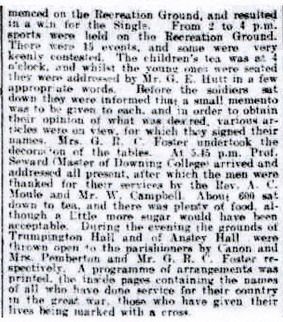
1919
Two British princes lived at Southacre House, Latham Road: Prince Albert, who became George VI, and Prince Henry, who became the Duke of Gloucester.
Sources of information: Renfrew, Jane M., Renfrew, Magnus A. and Rose, John K. (1996). Rus In Urbe. Chaucer Road and Latham Road: the History of Two Rural Roads in Cambridge.
Local History Group web page: Developing Chaucer Road and Latham Road.
1919-21
Fund-raising, creation and dedication of the War Memorial on Cross Hill at the junction of the High Street and Church Lane. The base of the earlier village cross (c. 1475) was discovered during the erection of the War Memorial. The memorial was designed and carved by Eric Gill and dedicated on 11 December 1921. It is now a Grade II* listed structure. The surroundings were renovated in late 2014.
Sources of information: Curme, Phil (2000). World War I and II Role of Honour, Trumpington War Memorial. Fletcher, Ken (2014), Trumpington’s Fallen Heroes of World War I . Pevsner, Nicholas (1970). Cambridgeshire. The Buildings of England . Trumpington Local History Group (2000). 20th Century Trumpington , page 12. The Victoria History of the Counties of England (1982). A History of Cambridgeshire and the Isle of Ely, Volume VIII. Armingford and Thriplow Hundreds . Trumpington, page 251.
Local History Group web page: Trumpington War Memorial; Aftermath of the War, 1918-21.
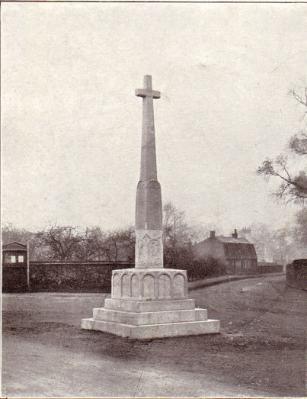
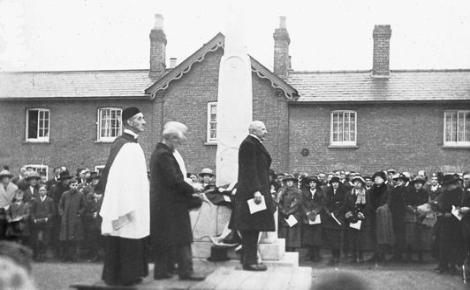
1920
The Trumpington Branch of the Women’s Institute was established on 17 January 1920 and held its first monthly meeting in the Village Hall on 5 February 1920.
Sources of information: Parish Magazine, February 1920. Trumpington Local History Group (2000). 20th Century Trumpington, page 12.
Local History Group web page: Centenary of Trumpington Women’s Institute.
1921
The Trumpington Post of the Comrades of the Great War was wound up and the Trumpington and Grantchester Branch of the British Legion was formed under the Royal Charter.
Sources of information: The Royal British Legion, Trumpington Branch 1921 to 1971, compiled by A. Heginbotham, 1971. Cambridgeshire Collection, Cambridge Central Library (C.37.3).
1921
Census year, the population of Trumpington was 1627 people. Despite the transfer of the northern part of the parish to Cambridge Borough in 1912, this figure is apparently the total for the original area (unlike in 1931, when the boundary change had a dr astic effect on the population figure).
Sources of information: The Victoria History of the Counties of England (1948). The History of the County of Cambridge & the Isle of Ely. Volume II , page 138.
Local History Group web page: Trumpington in the 1920s, map evidence.
1921
Building of the Evelyn Nursing Home on a site to the east of Trumpington Road. The hospital was founded by C. Morland Agnew. It was sold and renamed the Nuffield Hospital in 2003.
Sources of information: Trumpington Local History Group (2000). 20th Century Trumpington, page 12. Mann, Sheila (2005). A Wonderful Thing for Cambridge. The Evelyn Hospital, 1921 to 2003.
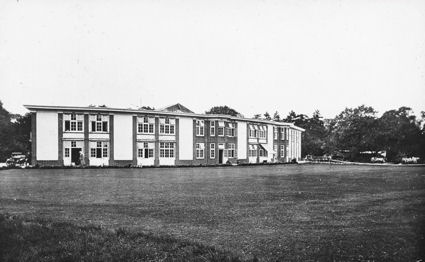
1922
The Royal Show was held in Trumpington in July 1922, on a site to the north of Long Road, near the railway lines. The site even had its own railway station.
Sources of information: Trumpington Local History Group (2000). 20th Century Trumpington, page 12-13.
Local History Group web page: The Railways of Trumpington, 1845-2010.
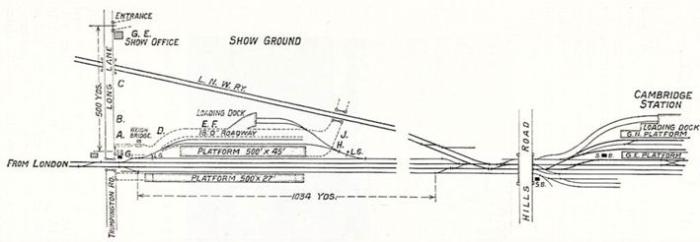
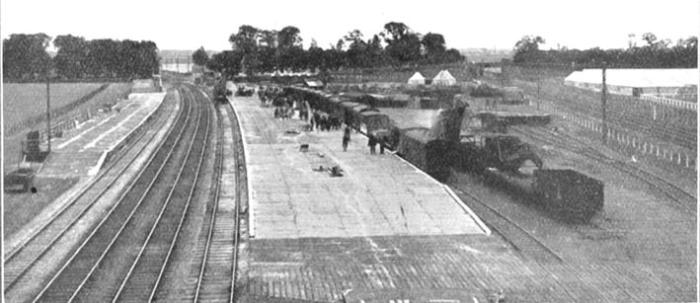
1920s
Walter E. Dring was born in Alpha Terrace in 1912 and grew up in Trumpington. He wrote his reminiscences of 1920s Trumpington in 1974.
Sources of information: Dring, W.E. (1974). Trumpington – Fifty Years Ago.
Local History Group web page: Trumpington Fifty Years Ago.
1920s
A notorious period of ribbon development along Shelford Road, including low-cost prefabricated bungalows. There was a concern that this type of development would lead to the spread of Cambridge into the countryside, with the Cambridge Preservation Society being formed to fight urban growth.
Sources of information:
Local History Group web page: Shelford Road.
1923-24
The Village Hall was extended, with the addition of a second hall and a committee room built in memory of Canon and Captain Pemberton, more than doubling the size of the original building. The new rooms were opened on 28 February 1924 by Sir Clifford Allbutt.
Sources of information: Village Hall archive.
Local History Group web page: History of Trumpington Village Hall, 1920s.
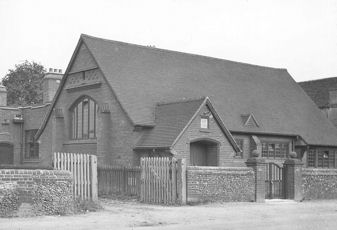
1924-43
Percy Robinson, the local school teacher, began to give lectures about Trumpington and its history. He died in post in 1943, aged 65.
Sources of information: Copy of lecture notes and photographs held by Local History Group.
Local History Group web page: Percy Robinson and the history of Trumpington.
1931
Census year, the population of Trumpington was 820 people. Following the transfer of the northern part of the parish to Cambridge Borough in 1912, this figure is the population in the reduced area.
Sources of information: The Victoria History of the Counties of England (1948). The History of the County of Cambridge & the Isle of Ely. Volume II , page 138.
1934
The second major boundary change came into effect in April 1934 when most of Trumpington was incorporated in Cambridge Borough (the part of the parish to the north of Long Road had been transferred in 1912). The land south from Long Road to the village and the surrounding area became part of Cambridge, while 382 acres of “virtually uninhabited” land in the south west part of the parish was transferred to Haslingfield (total area transferred 1439 acres, 1179 people). As one of the consequences of the change, a branch of the County Library closed and a branch of the Borough of Cambridge Public Library was established in the School in Grantchester Road with 500 volumes. It was opened by the Mayor on 4 April and was then open every Wednesday evening from 6 pm to 8 pm.
Sources of information: Darby, H.C. (1938). A Scientific Survey of the Cambridge Region . London: British Association. Page 178. Trumpington Local History Group (2000). 20th Century Trumpington , page 19. The Victoria History of the Counties of England (1982). A History of Cambridgeshire and the Isle of Ely, Volume VIII. Armingford and Thriplow Hundreds. Trumpington, page 248. Trumpington Magazine, April 1934.
1936
Demolition of the original Red Lion public house, followed by the construction of a new pub, c. 1939.
Sources of information:
Local History Group web page: The Red Lion public house.
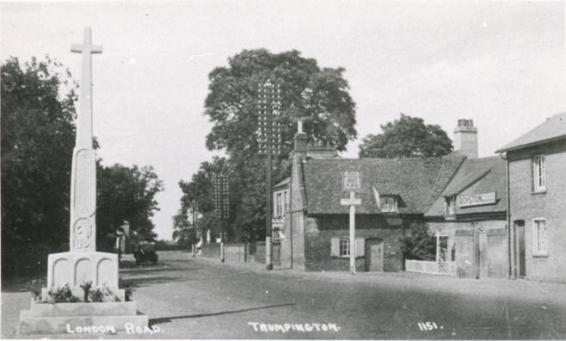
1939
Over 30 employees of Bata, the Czechoslovakian shoemakers, were able to leave their homeland and come to Trumpington and continue their work, based at Anstey Hall. The Hall is thought to have been unoccupied after the death of G.R.C. Foster in 1936. The June 1939 issue of the parish magazine refers to “There is general satisfaction that Anstey Hall is again occupied. We would extend a welcome to its inhabitants and hope that though exiled from their own land they may find peace and happiness in our midst”. In late September 1939, the national register lists 30 people involved with boot and shoe manufacturing living at Anstey Hall and others living in houses on Hauxton Road and Cambridge Road, Great Shelford. One of the men, Arnost Barth, had managed to escape to this country aided by letters from Thomas Bata, and it is probable the others had similar stories.
Sources of information: Trumpington Magazine, June 1939; 1939 England and Wales Register; personal communication from Thomas Barth.
1939-45, World War 2
The impact of World War 2 on the local area. The Village Hall was used as a canteen for school dinners and the Air Raid Precautions unit set up a feeding centre in case of enemy attack. Evacuees from St James School, Muswell Hill, set up a schoolroom in the Hall and the British Legion and Women’s Institute organised a canteen for soldiers living in local camps. Anstey Hall and its grounds were used by the military and Trumpington Hall was the location for an important Red Cross Hospital from 1941.
Sources of information: Trumpington Local History Group (2000). 20th Century Trumpington, page 20-26.
Local History Group web page: Trumpington and World War 2: Notes and Photographs; History of Trumpington Village Hall, World War II.
1943-47
An Internment Camp for Italian and German Prisoners of War (PoWs) was established on a site to the west of Hauxton Road, near the current Park & Ride site.
Sources of information: Trumpington Local History Group (2000). 20th Century Trumpington, page 23-24.
Local History Group web page: Trumpington Prisoner of War Camp.
1944
Education Act set up the split between primary and secondary education at age 11 and raising the school leaving age to 15.
Local History Group web page: Education and schools in Trumpington.
1945-47
The names of eight individuals who died during the War were added to the base of the War Memorial after the War by David Kindersley. A further name was added in 2014.
Sources of information: Curme, Phil (2000). World War I and II Role of Honour, Trumpington War Memorial. Pevsner, Nicholas (1970). Cambridgeshire. The Buildings of England. Trumpington Local History Group (2000). 20th Century Trumpington, page 27.
Local History Group web pages: History of Trumpington War Memorial. History of Trumpington Village Hall, World War II.
1945
Foundation of the Trumpington Branch of the Young Farmers.
Sources of information:
1945-48
Construction of the housing estate to the east of the High Street and Anstey Way: Paget Road, Foster Road and Byron Square. In July 1946, the Vicar (Rev. T. Young), wrote “Those who have lived here for twenty years or more have already seen Trumpington change from being a village outside Cambridge to a suburb of Cambridge and now we are seeing houses springing up at a speed which will increase the population by fifty per cent. In two years. Whether these inhabitants will regard themselves as Trumpington people or Cambridge people who happen to live in the south part of the borough will depend very much upon us.” and in February 1947 “There are still some readers who can remember Trumpington as a small village … Today, Trumpington is a growing suburb with a population of about 3000 … I estimate that the population will be 4000 or more by the time the new housing scheme is completed”. There was also a report in the local newspaper of a housewarming party to welcome residents of the new Council housing estate.
Sources of information: Parish Magazine. Trumpington Local History Group (2000). 20th Century Trumpington, page 27. ‘Housewarming party at Trumpington’, Independent Press and Chronicle, 25 October 1946, p. 8.
Local History Group web page: The Estate.
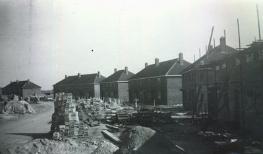
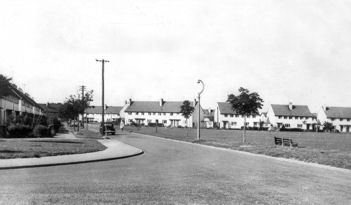
1947
Development of the Trumpington Allotment site between Shelford Road and Foster Road. The first page of the original Minutes Book of the Trumpington Allotment and Garden Society Ltd (TAGS) records the inaugural meeting in April 1947, when building of the estate was still in full swing. Early pages from the first plot rentals book, dating from May 1947, show that allotment tenants, as now, came from right across the village, not just from the estate.
Sources of information: Trumpington Allotment Society.
Local History Group web page: Foster Road Allotments.
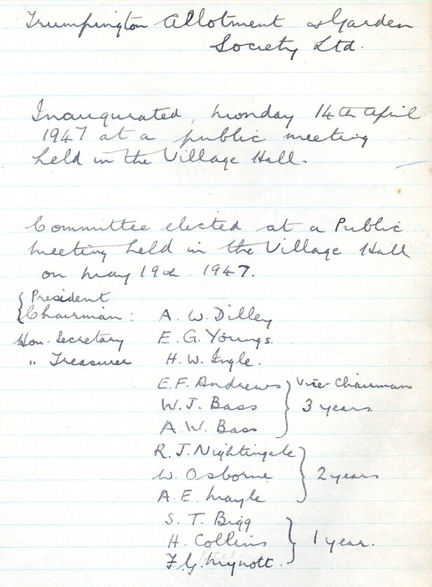
1949
Transfer of the ownership of Byron’s Pool from Trumpington Hall estate to Cambridge Council. Unfortunately, this coincided with the reconstruction of the weir, which resulted in an ugly structure which detracted from the beauty spot and led to a change to the layout of the river which made it less attractive for swimming. The weir also acted as a barrier to fish: a fish pass was developed in 2011 to alleviate this problem.
Sources of information: Information panels at Byron’s Pool, December 2010 and August 2011.
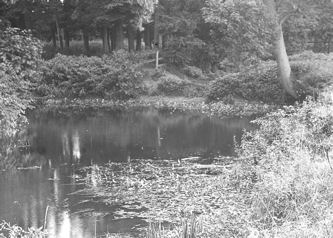
August 1949
Residents from the new Estate went for a day trip to Wicksteed. This was reported in the Cambridge Daily News, with the caption “Members and friends of the Trumpington Estate Tenants’ Association about to leave yesterday for an outing to Wicksteed Park, where a very enjoyable time was had by 350 children and 150 adults.”
Sources of information: Cambridge Daily News, 19 August 1949, Brenda Bass (née Jones) and Val Burden (née Charge).
Local History Group web page: Growing up on the Estate.
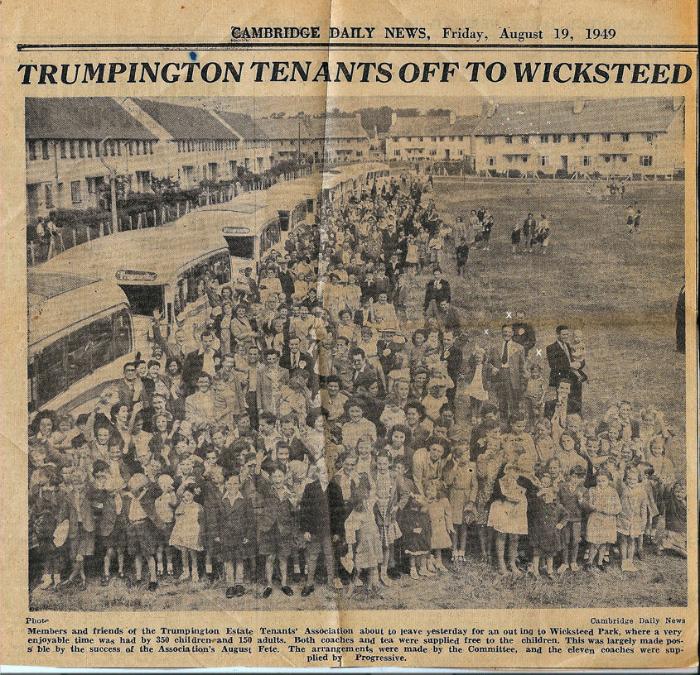
1949-50
Opening of Fawcett Junior School (1949) and Fawcett Infant School (1950), followed by closure of Church School (1950).
Sources of information: Trumpington Local History Group (2000). 20th Century Trumpington, page 28.
Local History Group web page: Education and schools in Trumpington. History of Fawcett School.
